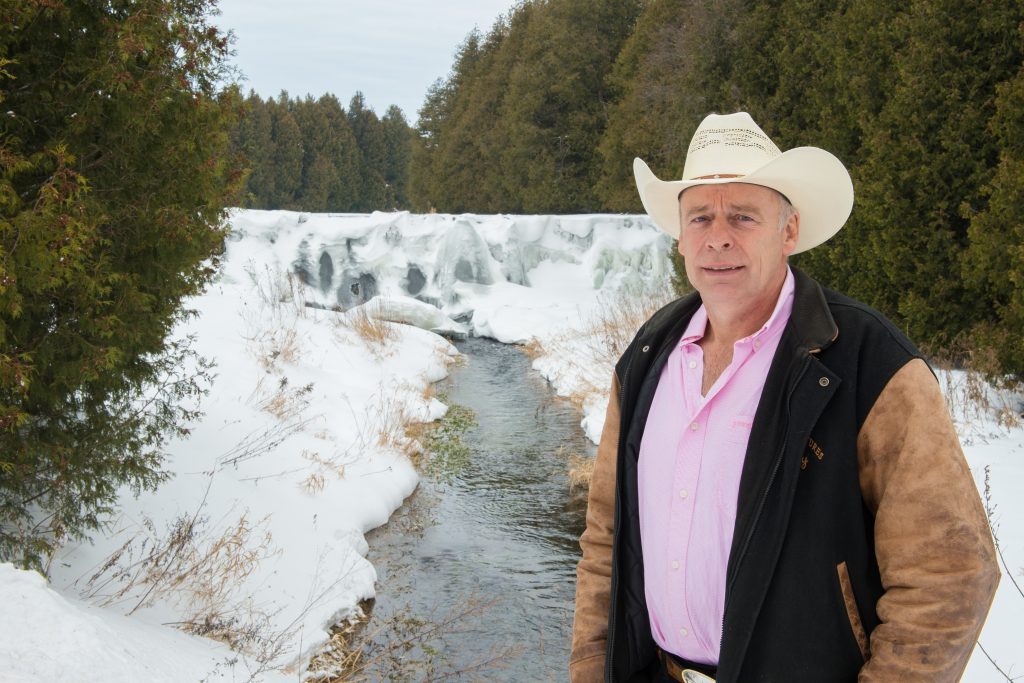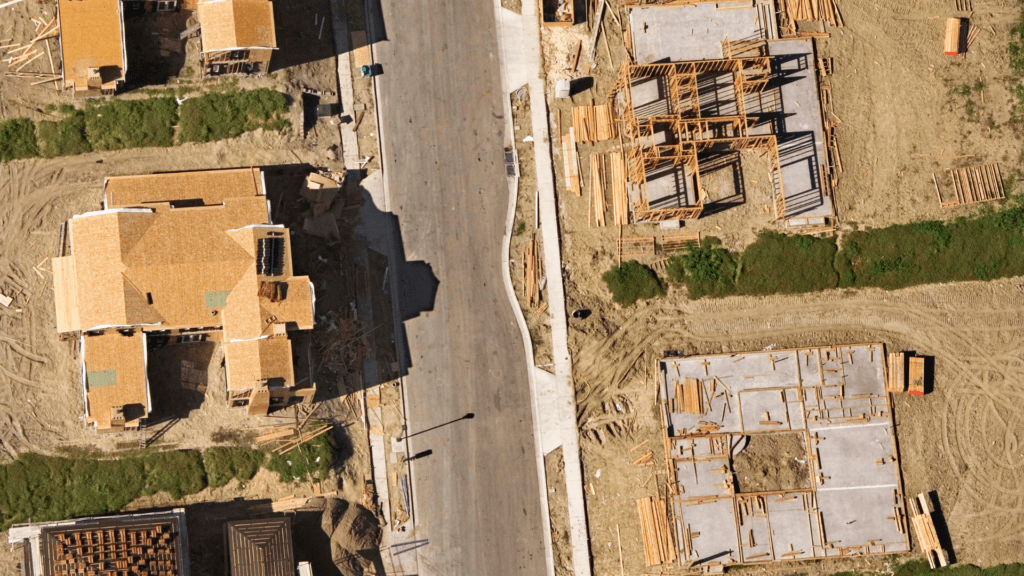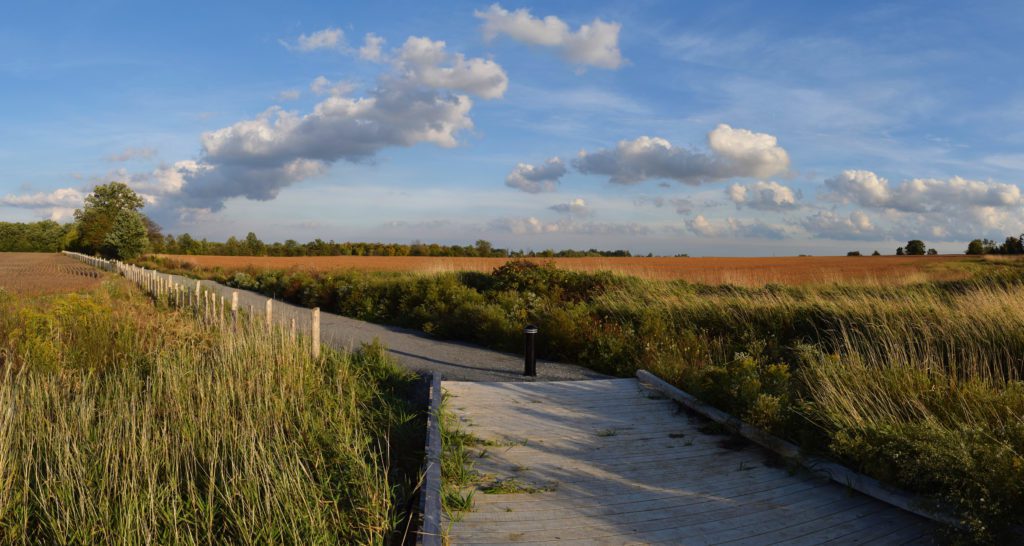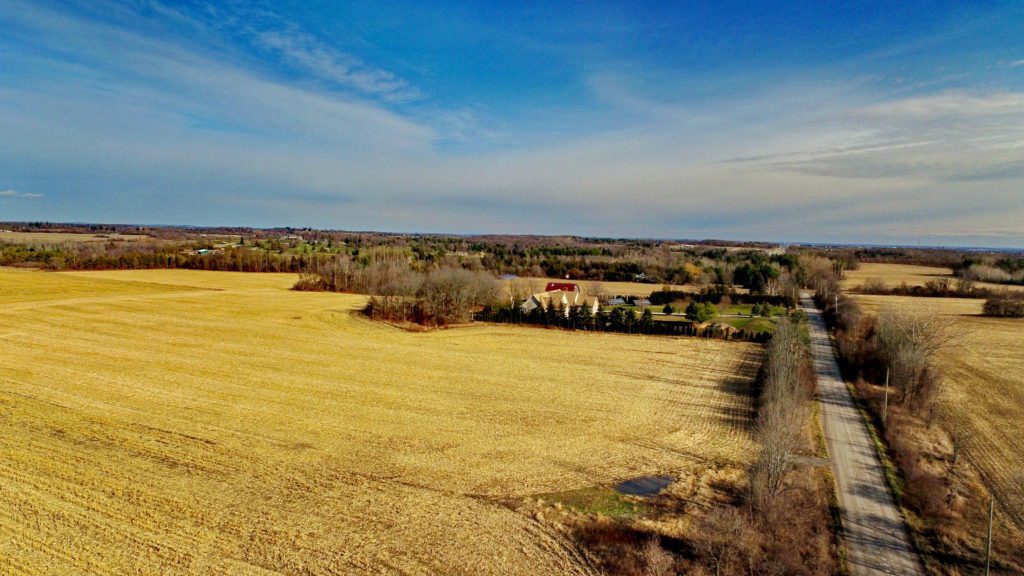This blog is part of our #ProtectOurWaters series that highlights residents who are fighting to expand the Greenbelt in their communities to protect vulnerable water supplies from urbanization and climate change. Please note that the content was updated from the original blog posted on March 15, 2018.
From his cattle ranch in the hills of Mulmur Township, Carl Cosack overlooks the beautiful Pine River Valley in Dufferin County. He is humbled everyday by the vast and precious farmland and waterways that surround him. Six years ago, Carl fought against a destructive mega-quarry to protect these vital water supplies and thousands of acres of prime farmland. Even though he was victorious and the Melanchthon quarry was stopped, Carl believes the real battle to protect land and water lies ahead.


Q: How did you get involved in Greenbelt action?
A: In 2012, while I was the chair of the Northern Dufferin Agricultural and Community Taskforce, I mobilized a diverse group of rural and urban residents to stop a mega-quarry application in Melancthon Township. The application was filed by The Highland Companies who wanted to build the largest quarry in Canadian history, on some of the best farmland in Ontario, across the headwaters of five river systems. What was bizarre was that the quarry would plunge 200 feet below the water table on a 15,000-acre plateau of Class 1 farmland. To make matters worse, Highland Companies wanted to draw 600 million litres of freshwater every day out of the quarry, which is equivalent to the amount of water used by 3 million Ontarians daily.
Our opposition was hugely successful and when the mega-quarry application was withdrawn, we celebrated! A community of our size was able to capture the hearts of hundreds of thousands of supporters province-wide and beyond. It was a remarkable victory.
Melancthon’s fields were secure for the time being, but the future of our land and water was still unknown. The Highland Companies owned 6,500 acres of Class 1 farmland in our region and could re-apply for the quarry at any time. The real battle ahead of us was to implement long-term and permanent protection of our land and water resources, through changes in our legislative frameworks. To fix the flaws in our land-use policies, I became involved with an organization called Food and Water First. We support Greenbelt expansion in our region to ensure we are never in the position we were in a few years ago.
Q: Why does water need protection in your region?
A: Melancthon Township sits on a high elevation in Southern Ontario, with vast aggregate resources such as limestone, and water systems that flow in four directions. Our region is blessed with prime farmland that is classified by a unique honeywood loam soil that supports the growth of all sorts of produce. Our farmers can grow up to 20 tons of food per acre on this land, and millions of people do not realize that six inches of top soil in our region can support their food supply.
But, sprawl development and aggregate operations continue to threaten our prime farmland and source water. There are also loopholes in the Aggregate Resources Act that permit non-farming development on our land and water systems. The mega-quarry would have been extremely dangerous if it dug 200 feet below the ground, considering our water table is only between 12 and 20 feet below. If our water is contaminated, it puts not only our water supply, but the food security of millions at risk.
Q: How are community members getting involved?
A: The mega-quarry application put land and water at the forefront of our policy challenges. Since then, our communities have started to recognize that we are very fortunate to have abundant and clean water, and we must protect it. Residents are starting to think not just for today, but for generations to come. Our region has also seen numerous water protection groups take action to raise awareness, and Food and Water First continues to engage hundreds of thousands of supporters through regular outreach and events. We support the Greenbelt expansion by encouraging our community to get involved in letter-writing campaigns, attending Public Open Houses, and more.
Q: What is your vision for this region?
A: The original Greenbelt was the product of tremendous visionary thinking. Now, we are at another crossroads as our government has learned lessons from the existing Greenbelt, and is proposing an even more visionary, expansive approach to protect our waters.
I am reminded every day that without water, there is no life. I hope that residents in our region and beyond see the value in expanding the Greenbelt to secure the food supply of millions of Ontarians.
Ontarians love the Greenbelt and its protection of our food and water sources for future generations. Tell Ontario to expand the Greenbelt to include more areas like Dufferin County.







